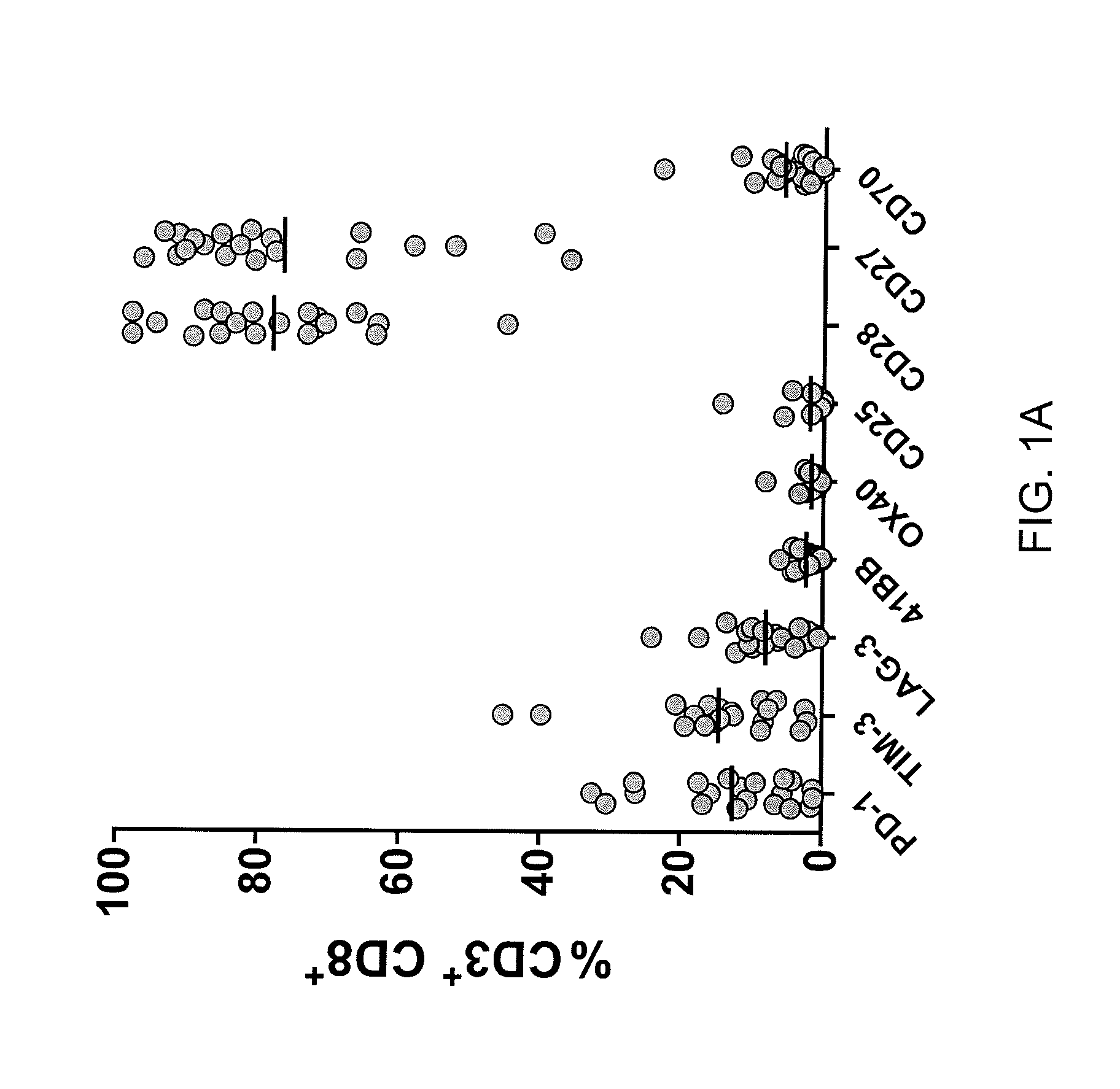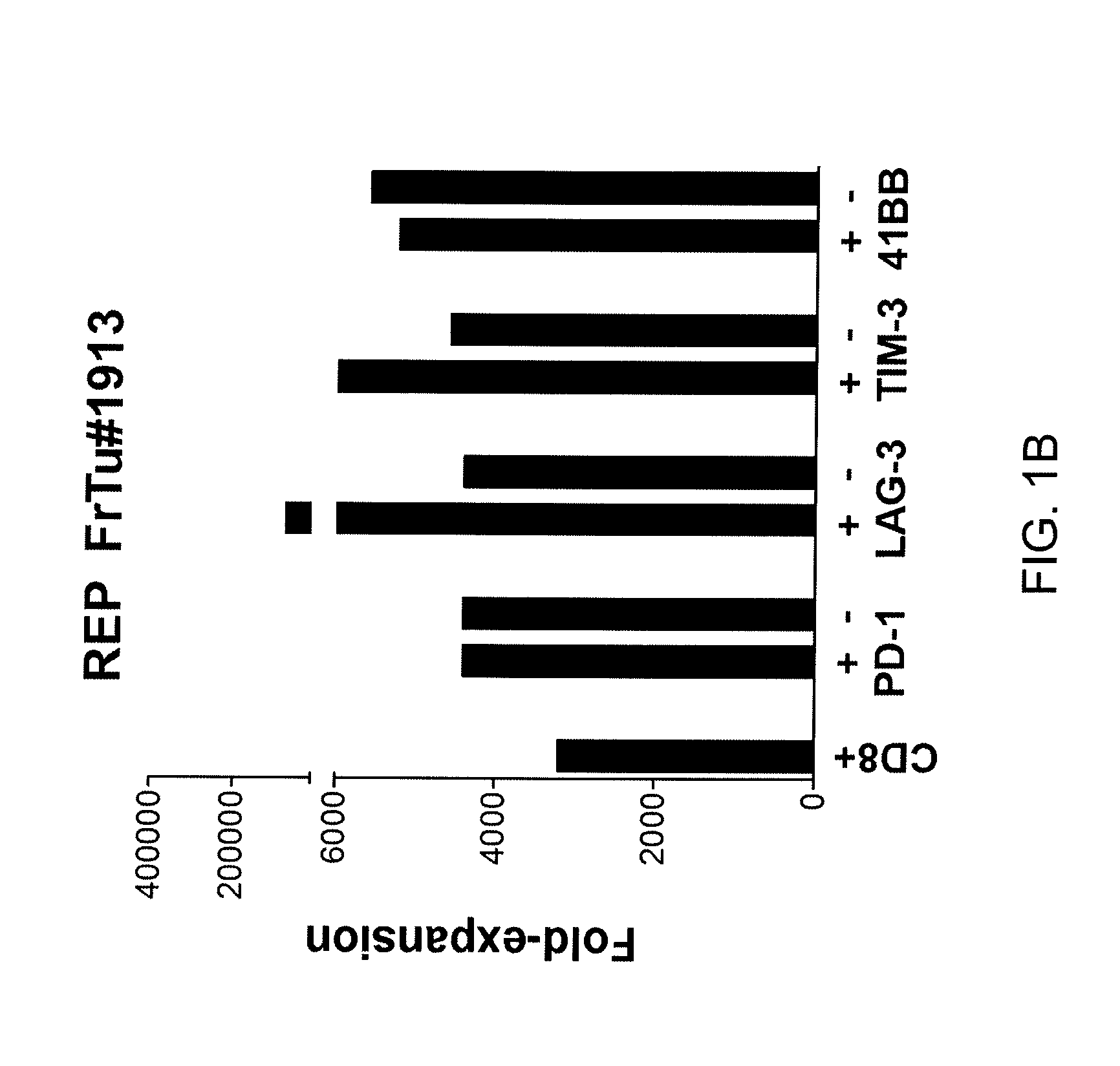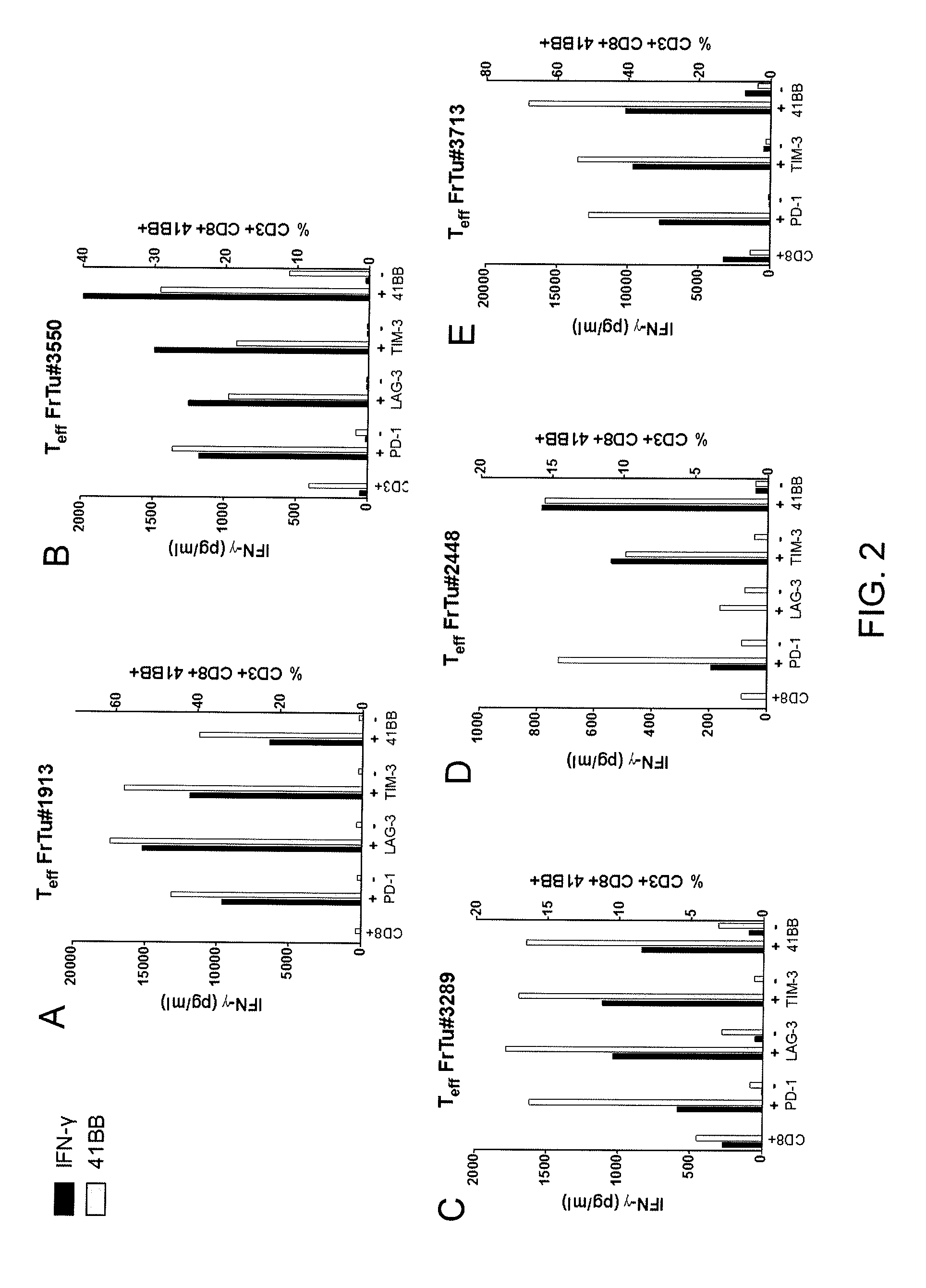Methods of producing enriched populations of tumor-reactive t cells from tumor
a technology of tumors and t cells, which is applied in the field of producing tumor-reactive t cells from tumors, can solve the problems of many obstacles to the successful use of act for cancer and other diseases, and the tumor-specific reactivity of t cells isolated from tumors may not be sufficient, and the effect of reducing the risk of cancer
- Summary
- Abstract
- Description
- Claims
- Application Information
AI Technical Summary
Benefits of technology
Problems solved by technology
Method used
Image
Examples
example 1
[0055]This example demonstrates the frequency of CD3+ / CD8+ cells in a fresh melanoma tumor digest sample expressing PD-1, TIM-3, LAG-3 or 4-1BB. This example also demonstrates that co-expression of 1) TIM-3 and PD-1, 2) LAG-3 and PD-1, and 3) LAG-3 and TIM-3 by CD8+ T cells isolated from a fresh melanoma tumor sample. This example also demonstrates the expression of PD-1, TIM-3, or LAG-3 by MART-127-35 reactive cells.
[0056]Single cell suspensions obtained from a mechanical and enzymatic digest of a fresh melanoma tumor sample were thawed and rested overnight at 1×106 cells / ml in absence of cytokines. The cells were stained and the percentage of CD3+CD8+ cells expressing PD-1, TIM-3, LAG-3, 4-1BB, OX40, CD25, CD28, CD27, or CD70 was measured by flow cytometry. The results are shown in FIG. 1A. As shown in FIG. 1A, CD3+ / CD8+ cells from a fresh tumor digest sample can express PD-1, TIM-3, LAG-3 or 4-1BB.
[0057]In a separate experiment, cells were obtained from fresh samples of two diffe...
example 2
[0059]This example demonstrates a method of specifically selecting CD3+ CD8+ cells that also express one of PD-1, TIM-3, LAG-3 and 4-1BB and expanding the numbers of the selected cells.
[0060]A single cell suspension obtained from a fresh melanoma tumor sample (FrTu#1913) was thawed and rested overnight in absence of cytokines and then stained. The cells were sorted into the following CD3+ populations using anti-CD3, anti-CD8, anti-PD-1, TIM-3, LAG-3 and 4-1BB antibodies: CD8+, CD8+ / PD-1+, CD8+ / LAG3+, CD8+ / TIM-3+, CD8+ / 4-1BB+, CD8+ / PD-1−, CD8+ / LAG3−, CD8+ / TIM-3−, or CD8+ / 4-1BB− by fluorescence-activated cell sorting (FACS). The numbers of cells were then expanded using a rapid expansion protocol (200-fold excess irradiated feeders, 30 ng / ml anti-CD3 and 500 CU / ml IL-2) and fold-expansion of the isolated populations was measured. The results are shown in FIG. 1B. As shown in FIG. 1B, the numbers of CD8+ cells that also express one of PD-1, TIM-3, LAG-3 and 4-1BB were expanded.
example 3
[0061]This example demonstrates the in vitro reactivity of T cells isolated from a fresh melanoma tumor sample and sorted for expression of CD8 and one of PD-1, LAG-3, TIM-3, and 4-1BB.
[0062]4-1BB up-regulation is an indicator of TCR stimulation. It has been observed that after the numbers of T cells are expanded and in the absence of TCR stimulation, 4-1BB expression is lost. It has also been observed that after the numbers of cells are expanded and the cells are co-cultured with an autologous tumor cell line, T cells that had previously lost 4-1BB expression and which are stimulated by the tumor cell line will re-express 4-1BB. Accordingly, 4-1BB expression is measured 24 hours after co-culture with autologous tumor as a marker of TCR stimulation against the autologous tumor cell line.
[0063]A single cell suspension from a fresh melanoma tumor digest sample (FrTu#1913) was rested overnight without cytokines and sorted for the following populations: CD8+, CD8+ / PD-1+, CD8+ / LAG3+, CD8...
PUM
| Property | Measurement | Unit |
|---|---|---|
| Composition | aaaaa | aaaaa |
Abstract
Description
Claims
Application Information
 Login to View More
Login to View More - R&D
- Intellectual Property
- Life Sciences
- Materials
- Tech Scout
- Unparalleled Data Quality
- Higher Quality Content
- 60% Fewer Hallucinations
Browse by: Latest US Patents, China's latest patents, Technical Efficacy Thesaurus, Application Domain, Technology Topic, Popular Technical Reports.
© 2025 PatSnap. All rights reserved.Legal|Privacy policy|Modern Slavery Act Transparency Statement|Sitemap|About US| Contact US: help@patsnap.com



